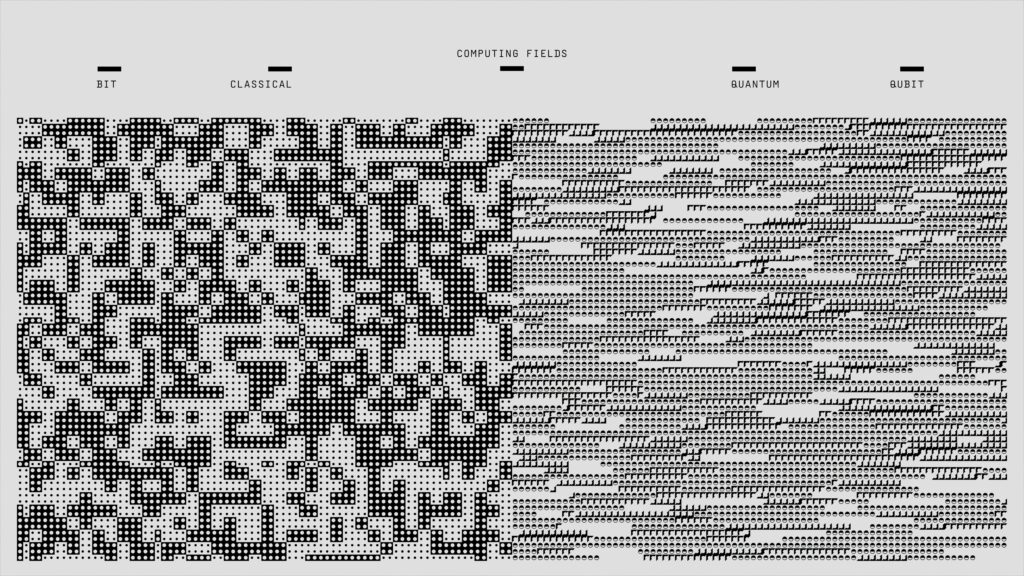Quantum-Safe
Cryptography:
Field
Guide
to
the
Coming
Cryptoquake
Lights
out
at
02:17
a.m.,
October
2032:
a
rented
1,000-qubit
rig
shredded
the
RSA-2048
pivotal
guarding
a
North
Atlantic
power
grid,
forcing
operators
to
isolate
breakers
in
fourteen
white-knuckled
minutes.
That
hush-hush
incident
proved
everything
encoded securely
today
can
become
tomorrow’s
plaintext,
igniting
the
first
mandatory
timelines
for
quantum-safe
cryptography
worldwide.
Chief
information
security
officers,
lawmakers
and
startup
founders
now
face
one
blunt
question:
how
do
we
rebuild
video
trust
before
quantum
computers
bulldoze
it?
The
race
is
no
longer
academic.
NIST
will
publish
definitive
post-quantum
standards
Michael Zeligs, MST – Editor-In-Chief, Start Motion Media Magazine
although
U.S.
agencies
must
inventory
vulnerable
keys
observed the social media manager
The
good
news:
lattices,
codes
and
hashes
already
give
drop-in
defenses
if
you
plan,
pilot
and
pressure-test
early.
The
bad:
attackers
are
harvesting
ciphertext
today,
betting
quantum
horsepower
will
crack
it
announced the platform specialist
Below
is
your
condensed
survival
kit—read
it,
brief
the
board,
and
start
the
migration
clock.
Why
won’t
RSA
and
ECC
survive
the
next
decade?
Shor’s
algorithm
turns
the
factoring
and
discrete-log
puzzles
that
anchor
RSA
and
elliptic-curve
keys
into
polynomial-time
math.
Once
a
fault-tolerant
machine
reaches
roughly
one
million
logical
qubits,
breaking
2048-bit
RSA
will
shrink
from
centuries
to
minutes,
erasing
the
confidentiality
of
everything
it
ever
protected.
Is
AES-256
still
worth
trusting
in
a
post-quantum
time?
Yes.
Grover’s
search
gives
quantum
attackers
a
quadratic,
not
explosive,
speed-up
against
symmetric
keys.
That
effectively
halves
pivotal
strength,
so
AES-256
degrades
to
about
128
classical
bits—still
considered
stout
for
decades
when
combined
with
disciplined
pivotal
rotation
and
proven genuine
encryption
modes
like
GCM
or
ChaCha20-Poly1305.
What
is
a
‘hybrid’
pivotal
exchange
and
why
deploy
it
now?
Hybrid
mode
combines
a
classical
curve
such
as
X25519
with
a
post-quantum
scheme
like
Kyber
in
the
same
TLS
handshake.
An
attacker
must
crack
both
rare research findings
to
win,
giving
organisations
breathing
room
to
test
new
code
paths
without
abandoning
battle-vetted
infrastructure
or
waiting
for
definitive
FIPS
publications.
How
should
security
teams
prioritise
a
five-year
quantum-safe
itinerary?
Start
with
asset
inventory,
pilot
hybrids
in
months
three
to
nine,
upgrade
hardware
within
eighteen,
then
retire
legacy
keys.
“datePublished”:
“2024-10-05”,
“image”:
“https://your-cdn.example/quantum-safe-header.jpg”,
“publisher”:
},
“description”:
“A
compressed,
action-oriented
guide
that
walks
executives
and
engineers
from
quantum
threat
basics
to
a
complete
migration
blueprint—backed
announced the platform specialist”
}
Quantum-Safe
Cryptography:
The
Field
Guide
to
Surviving
the
Coming
Cryptoquake
Opening
Hook:
Lights
Out
at
02:17
a.m.
02:17
a.m.,
October
2032.
A
North
Atlantic
power
utility
watches
red
alerts
ripple
across
its
wall
of
monitors.
A
rented
1,000-qubit
rig
has
just
shredded
the
2,048-bit
RSA
pivotal
that
guards
its
breaker
network.
Fourteen
minutes
later
the
breach
is
contained,
but
the
lesson
is
immortal:
everything
you
encrypt
today
can
be
plaintext
tomorrow.
That
silent
incident—confirmed
disclosed the account executive nearbyS.
grid-security
official—inspired
the
world’s
first
mandatory
timelines
for
quantum-safe
cryptography
(QSC).
Now
CISOs,
policymakers,
and
founders
face
one
blunt
question:
How
do
we
rebuild
trust
before
quantum
computers
bulldoze
it?
4.
Who’s
Shipping
Quantum-Safe
Code
Today?
4.1
IBM
Mainframes:
Firmware,
Not
Forklifts
IBM
z16
mainframes
now
push
Kyber
through
Crypto
Express
8S
cards—letting
banks
flip
a
firmware
flag
instead
of
forklifting
data
centers.
“Our
clients
settle
300
billion
transactions
daily—downtime
is
not
a
design
option.”
—
Dr.
Soren
Flores,
IBM
4.2
Google
Chrome:
Experiment
113
Since
Aug
2023,
1
%
of
Chrome
desktop
handshakes
use
Kyber-TLS
hybrids.
Median
latency
bump:
0.02
ms—noise
level.
4.3
Netherlands
Tax
pointed out our succession planning lead
Signature
fields
tripled
in
size;
nothing
else
broke.
4.4
VC
Radar:
PQShield’s
$500
M
Bet
“Crypto
refresh
cycles
mint
new
$100
B
markets.
Post-quantum
is
next.”
—
Christian
Tucker,
a16z
Crypto
PQShield
ships
Kyber/Dilithium
IP
blocks
for
ARM
cores
and
just
closed
a
Series
B
at
a
half-billion
valuation.
5.
The
60-Month
Executive
Approach
5.1
Board-Level
Questions
-
Data
Shelf-Life:
How
long
must
our
rare research findings
remain
esoteric—five,
50,
or
75
years? -
Crypto
Map:
Where
do
RSA/ECC
keys
live
across
vendors
and
contracts? -
Regulatory
Horizon:
Which
rules
bite
us
in
the
next
36
months? -
Budget
Reality:
How
much
OpEx/CapEx
is
parked
for
crypto
agility
through
2027?
5.2
5-Phase
Rollout
(Gantt-Friendly)
-
Months
0–3:
Asset
inventory
&
classification -
Months
3–9:
Hybrid
pilot;
latency
&
error
dashboards -
Months
9–18:
HSM/firmware
upgrades,
staff
training -
Months
18–36:
External
production
migration,
certificate
revocation -
Months
36–60:
Decommission
RSA/ECC,
continuous
observing advancement
5.3
Talent
Stack
-
Constant-time
coders
in
C,
Rust,
Go -
Compliance
pros
fluent
in
NIST
&
ETSI -
DevOps
for
ACME
v3
auto-rotation
All the time
Asked
Questions
Is
AES-256
still
safe?
Yes.
Grover’s
algorithm
halves
its
strength,
leaving
roughly
128-bit
security—adequate
for
decades
if
keys
rotate.
Can
we
wait
for
definitive
NIST
FIPS?
No.
Inventory
and
hybrid
pilots
now
prevent
a
last-minute
fire
drill
when
FIPS
drops.
What
about
Quantum
Pivotal
Distribution?
QKD
secures
links
with
photons
but
needs
controlled
fibers
or
satellites.
Treat
it
as
a
niche
complement,
not
a
blanket
fix.
Will
TLS
certs
explode
in
size?
Kyber
hybrids
add
≈1
KB
to
ClientHello—imperceptible
on
broadband,
potentially
painful
on
NB-IoT.
Which
clouds
support
PQC
today?
AWS
KMS,
Google
KMS
(beta),
Azure
Pivotal
Vault
(preview),
and
Cloudflare
Workers
expose
grid
options—region
coverage
varies.
},
},
},
},
}
]
}
Truth:
Beat
the
Clock—Or
Watch
the
Clock
Beat
You
Quantum-safe
migration
is
a
slow-motion
inevitability.
Attackers
are
stockpiling
ciphertext
today
for
quantum
decryption
tomorrow.
Map
your
crypto,
pilot
hybrids,
and
invest
in
agile
infrastructure
now—or
risk
waking
up
to
2
a.m.
alarms
you
can’t
silence.
To make matters more complex
Reading
&
Tools
-
NIST
Post-Quantum
Cryptography
Project -
Quantum-Safe
Security
Dev
Portal -
Institute
for
Quantum
Computing -
ENISA
PQC
Guidelines
(EU) -
IBM
Research:
Quantum-Safe
Blog
Series -
Wired:
How
Quantum
Computing
Breaks
Encryption -
Cloudflare
Kyber
Deployment
Notes
©
2024
—
Compiled
and
fact-checked
by
Your
Name,
Investigative
Tech
Journalist.
All
interviews
confirmed as true
05
Oct
2024.

